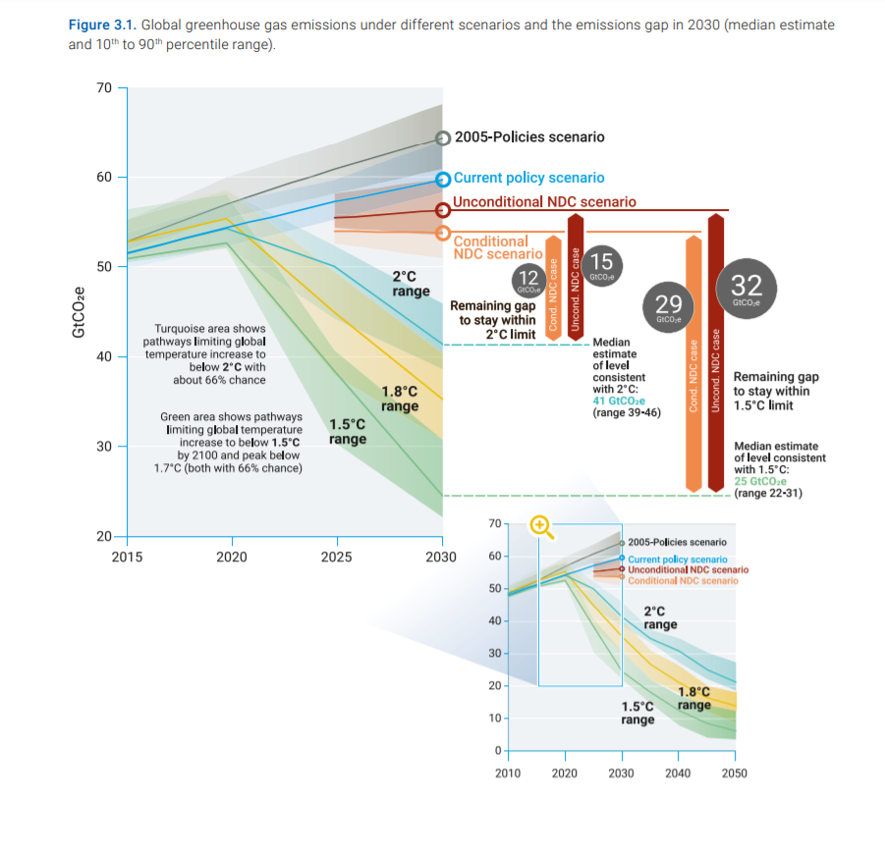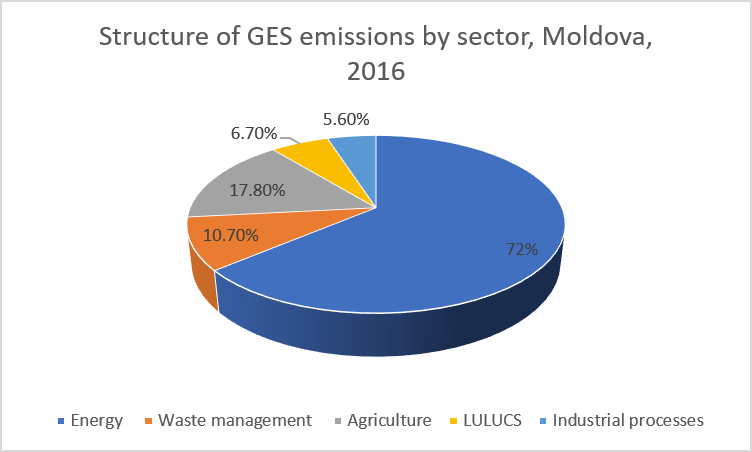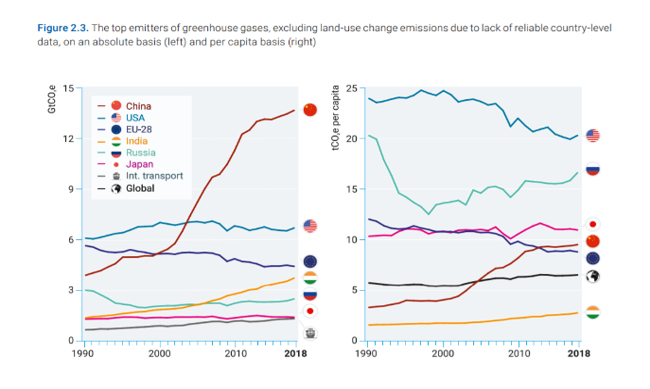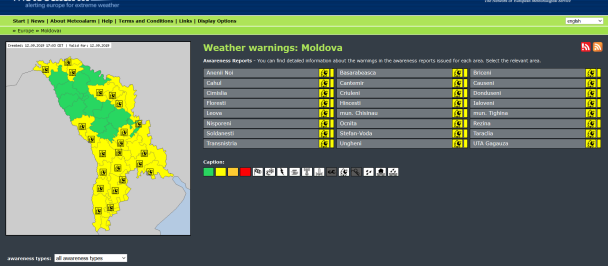by Inga Podoroghin, Programme Specialist, UNDP Moldova & Christian Ballaro, Programme Officer, European Union Delegation to the Republic of Moldova
Moldova leads the way in climate action, as part of flagship #EU4Climate initiative
May 18, 2020
Photo: UNDP Moldova
Moldova dares to lead the way in climate action, even being severely affected by global warming. The ambition is to transform this challenge into an opportunity for development. The Republic of Moldova has recently become the fourth country in the world to present its second National Determined Contribution (NDC), developed with the support of EU and UNDP. Both multilateral organizations have pledged to help countries meet the Paris Agreement commitments – a €100 billion European Green Deal and UNDP Climate Promise, among others. After the lockdown caused by the COVID-19 pandemic, we have the opportunity to relaunch economies towards low-emissions basis.
The Paris Agreement signed in 2015 is the main international climate agreement, by which the countries of the world have committed themselves to keep the global temperature rise this century well below 2 degrees Celsius above pre-industrial levels while pursuing efforts to limit it to 1.5°C. The instruments through which the countries establish their contribution by detailing the actions towards the achievement of this objective are the National Determined Contributions or NDCs. The countries signatories to the Paris Agreement were to submit the first NDCs (NDC1) by the end of September 2015, and then update them every five years until 2030, and 2020 is the year in which the updated National Determined Contributions (NDC2) will be presented.
Why is there a need to increase the ambition and efforts to mitigate climate change in the updated National Determined Contributions?
The need is somehow self-evident since according to the latest data, greenhouse gas (GHG) emissions should be three times lower, compared with the first NDCs, if we want to keep global warming within a 2° C increase and 5 times lower, if we target the even more desirable scenario of 1.5° C. Not addressing this increase of temperature could result into a sudden increase of the number of unexpected and catastrophic events.
From UNEP Emissions Gap Report 2019
The Republic of Moldova is among the first countries to submit its updated National Determined Contribution (NDC2), with increased ambition, to the Secretariat of the UN Framework Convention on Climate Change (UNFCCC), surpassed only by the Marshall Islands, Suriname and Norway. The document was developed with the support of the EU4Climate Regional Project, funded by the European Union and implemented by the United Nations Development Programme.
The UNFCCC Secretariat noted Moldova's global leadership in developing updated NDCs. The EU Delegation to the Republic of Moldova is particularly proud of this outstanding result achieved, thanks to the effective cooperation among the EU, UNDP and Moldovan institutions.
In its NDC1, Moldova has already committed to reduce unconditionally GHG emissions up to 67% compared to 1990 and in this second version the ambition has increased to 70% unconditionally or even 88% if the country will have access to technologies and financial resources at low costs. The availability of funding is essential, as the need for investment in climate change mitigation and adaptation measures is estimated at about $5 billion by 2030 or $500 million per year. Although the amount seems huge for an economy with a GDP of only $12 billion, the costs of inaction will be certainly much higher.
NDC2 estimates the losses caused by global warming and the extreme weather events associated with it at $1.3 billion annually by 2050, if the climate change mitigation and adaptation measures will not be taken. According to a World Bank estimate, Moldova is the most vulnerable country in Europe to climate change.
It is most likely that Moldova will be affected by three types of climate impacts:
- rising temperatures;
- changes in precipitation regimes; and
- increasing the climate aridity, associated with increasing the frequency and intensity of extreme weather events such as heat waves, frosts, floods, storms with heavy rain and hail, severe droughts.
The most negative projections show that the average annual temperature could increase by up to 6° C, and rainfall will be reduced by over 25% annually by 2100, the index of consecutive dry days could increase by up to 17%, as well as soil aridity. All this will lead to a decrease in food production and will have a negative impact on health and standard of living.
What can we do to mitigate the impact of climate change?
Real policies, both national and sectoral, are set out in the Low Emission Development Strategy until 2030, which will be also updated with the support of the EU4Climate project by the end of this year. However, the intervention sectors are clear if we look at the main sources of emissions, according to NDC2. In 2016, almost 73% of total net greenhouse gas emissions came from the energy sector, which also includes the buildings and transport sub-sectors, followed by agriculture with almost 18%, the waste sector with almost 11% and industrial processes with 5.6% of total. The share of the land use sector, the change of land use and forestry categories is 6.7%.
It is worth noting that while Moldova has reduced its emissions by 68% compared to 1990, after the year 2000 emissions began to increase by an average of 3.4% per year and in the last decade the growth rate was reduced to 0.12% per year being stabilized in the period 2008-2016 with an annual level of about 14.0-14.5 million tons of CO2 equivalent.
After 2000 it is possible to notice an interesting trend of decoupling GHG emissions from GDP growth, which was on average about 6.1% annually. Emission intensity in Moldova is, however, one of the highest among the transition economies in Central and Eastern Europe - about 1.9 kg CO2 per unit of real GDP. Thus, the potential for mitigation is still very high and in each of the four sectors substantial efforts are to be made to further reduce emissions as well as raising the emphasis on adaptation to climate change.
Sectoral efforts should be complemented by cross-cutting priorities, and these are listed in the NDC2:
- Policies execution, increase of knowledge and capacity development;
- Improving climate information;
- Integrated disaster risk management;
- Adapting to climate change at the community level;
- Adoption and technologies transfer;
- Financing adaptation to climate change;
- Involvement of the private sector in building resilience to climate change;
- Gender issues.
Last year, UNDP has launched the Climate Promise – a global commitment to support 102 countries in developing updated National Determined Contributions and funding their implementation. The Republic of Moldova was the first country in the world that, benefiting from support within the initiative, but also from the EU4Climate Project, financed by the European Union, managed to develop and present to the UNFCCC Secretariat an updated NDC.
After Moldova, three other countries have presented the updated NDCs, together having a share of 2.9% of total global greenhouse gas emissions. 106 countries, representing 15% of global emissions, have announced that they will increase their ambition in the updated NDC, and 33 that they will revise the NDC1, including the European Union.
Worldwide the effect of climate policies has not been sufficient yet to counterbalance the impacts of the increasing growth of greenhouse gas emissions sources. Economic growth is still based largely on the use of fossil fuels to meet the demand on a growing population. According to the United Nations Environment Programme’s Emissions Gap Report, in 2018 the level of emissions forecast for 2020 in the scenario in which no policies to combat climate change are implemented has practically been reached. Some countries have managed to reduce emissions and even fulfilled their commitments while others have continued to increase them. Globally, this evolution means that the space for maneuver of individual states is greatly reduced and efforts to adapt and mitigate in the remaining time will have to be much larger and costlier.
2020 is crucial for climate action
Scientists from all over the world have already launched their message and time is running. These days a new and unexpected emergency is dramatically changing our life and we still have to understand and assess the full social and economic impacts of the COVID-19 pandemic but it is certain that after this period of quarantine we will dive into a "new normality" where socio-economic development will have to be re-designed.
This crisis after all might give us the unexpected opportunity to rethink economic development on new green and low-emissions basis. The European Green deal seems surprisingly timely these days.

 Locations
Locations




